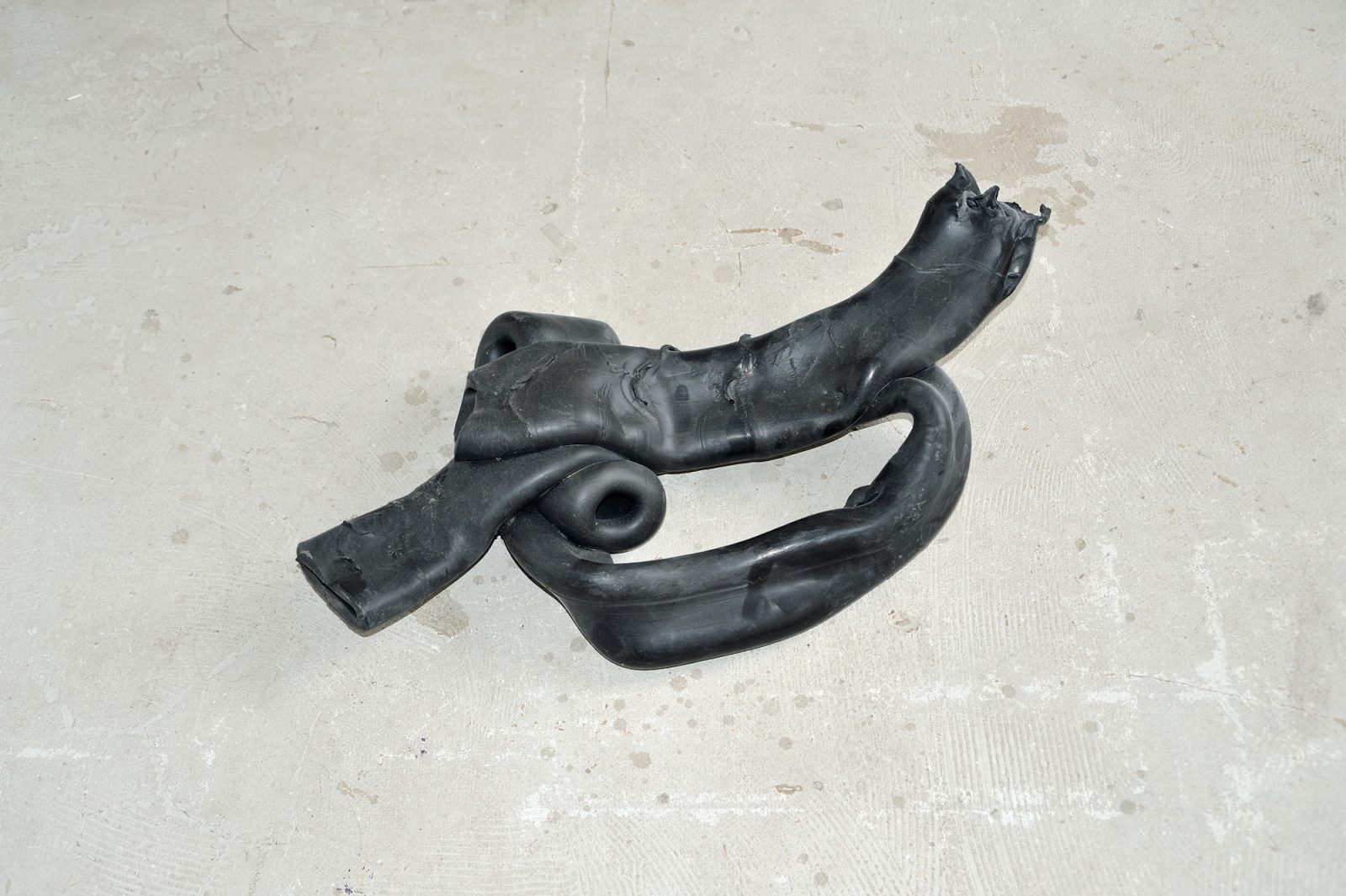It turns out that viscosity is extremely difficult to measure in non-Newtonian fluids like mastic gum. The viscosity of these fluids—how fast or slow they flow, how easily they can be deformed—not only varies with temperature and pressure, but also with stress. There’s not a linear relationship between any of these factors either, and so scientists resort to calling them “strange” and measure them with special devices called rheometers. While it may be hard to measure the viscosity of a strange fluid like mastic gum, it’s easy to sense it. Gum stretches out ribbon-like under gravity’s pull. There is a slow drag to its drips. Gum pools in blobs, creeps along the floor, looks and feels sticky but is hard to the touch.
Nina Canell first became interested in mastic when she saw a piece of Neolithic chewing gum displayed in a Finnish archaeological museum. (We’re warned that swallowed gum might stay in our stomachs for seven years, but 7,000 years is something else.) The preservation of this bit of gum seemed at odds with the substance’s generally pliable disposition, and Canell took this as an invitation to consider the nature of gum’s material state changes. Using wood columns, industrial poles, and, at the Institute, an austere shelving system, Canell’s latest body of work investigates mastic’s viscous potential and figures sculpture itself as a transformative material process. Material volatility, brought on by the storage and transfer of energy—this is central to Canell’s work.
If gum makes slow-moving and stealthy transitions, Nitinol—the other material in Canell’s installation—is quite the opposite. Colloquially called memory wire, Nitinol is a metal alloy that’s unusually sensitive to changes in temperature. Its crystal atomic structure contracts into the densest arrangement possible when heated; when cooled, the atoms loosen up. Practically this means that if memory wire is bent into a particular shape, it “remembers”—or stores—the shape every time it’s heated. Somewhat freakishly, it can keep going in and out of shape like this indefinitely. Memory wire appears in Canell’s work in a wall installation. A system of DC generators sends hot jolts of electricity through delicate wires that cavort with a jumpy staccato rhythm: a stored choreography activated by heat.
Canell’s materials are common, but their behavior in her work is unpredictable. Some have a texture and mass familiar to us: not only chewing gum, but sticks, water, volumes of air; others we use frequently but rarely see, like memory wires, undersea cables, and fiber optic filament. Their arrangement heightens our sense of how they affect and are affected by what they come into contact with. In keeping with the complexity of the physical sciences, her sculptures express the emergent properties of dynamic systems; the artist’s materials, as much as the artist herself, have the final say in the forms they take. The artist discovers her works after she’s done with them.
Insisting on form-as-process, Canell is installing sculptures at the Artist’s Institute that take advantage of the exhibition’s four-month duration. Temperature, gravity, pressure, and stress are on display through her memory wires and mastic gum. In addition, a changing configuration of found cable sheaths—the rubbery skins that encase telecommunication wires and fiber optic cables—will shift over time on the gallery’s floor. Alongside these sculptures, Canell is showing a new film made collaboratively with Robin Watkins––her first in nearly a decade—that tracks the probing travels of a Leopard slug. The slug moves within a defunct electrical switchboard by way of sensors that respond to light, humidity, and smell.

